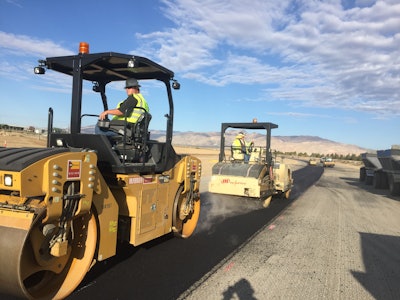
When Granite Construction West tackled the reconstruction of the Honda Proving Center of California (HPCC) testing facility near Cantil, the contractor knew they were in for a challenging job. Location, weather concerns and a heightened degree of smoothness created challenges for the Granite team.
But not only did the contractor complete the job and surpass the smoothness rating, the project was recognized by the National Asphalt Pavement Association with a 2017 Quality in Construction Award.
The HPCC testing track is a 7 ½-mile, four-lane oval with 2.3 miles of turns. The original track, constructed by Granite Construction and opened in 1991, was essentially flat, with only a 1% slope (Figure 1). For the reconstruction American Honda Motor Co. tasked Granite Construction with constructing a 5% “super elevation” on the outside lane (Lane 1). Lane 4, the inside lane, would have a 1-2% slope and lanes 1-3 would slope to 5%.
The HPCC is located in the Mojave Desert, which Paul Niglio, project engineer, says is not near much. “Because it’s in the middle of nowhere it’s difficult and expensive to haul things in and out so we wanted to minimize that,” he says.
Gary Wothers, Granite senior estimator, worked with Honda and helped develop a plan to “balance the dirt,” in other words to use the site’s existing material to reconstruct the track so that little debris had to be hauled away and little fill material had to be brought in.
“As it turned out we used all the material that was on site. We didn’t have to haul any away,” Niglio says.
The Biggest Challenge
While distance encouraged Granite to plan the job to reduce haul costs, the biggest challenge was stabilizing the subgrade, which 5-6 ft. beneath the track is clay “that you can mold pottery out of, it’s that malleable. The worst areas are literally like walking on a waterbed,” Niglio says.
Instead of importing fill material, Honda decided to stabilize the clay by treating the subgrade with lime, which basically turned the clay into sandy silt.
But before they could stabilize the clay they had to break up the existing track and transform it into base material. They used pulverizers to break up the asphalt track about 6 in. deep (Figure 2), then mixed the pulverized material with the original subgrade about 16 in. deep to create base material (Figure 3).
Then, working on half the track at a time (Figure 4), Granite’s crews removed half the width of the track, flopping the excess and excavated material (“A”) onto the other half of the track. This gave the crew access to the subbase that required lime treatment (Figure 5). A subcontractor, PRS Construction & Restoration, Sacramento, CA, spread lime and mixed it 18 in. deep into the subgrade to stabilize it. Once the subbase was treated with lime, Granite reversed the process (Figure 6), flopping the material it had stacked on half the track into the area it had just lime treated on the other half of the track (Figure 7), repeating the entire process (Figure 8) on the other half of the track. Once that half of the track was completed the excess material “A” stacked on half the track was moved into the hole and graded with blades and dozers. (Figure 9).
One of the requirements for Granite was to maintain the track’s existing elevation, which as Niglio explains can be difficult when adding a new layer of asphalt and incorporating existing pulverized material into the project.
“Adding a new layer of, say, 6 in. of asphalt would make us 6 in. higher than the existing pavement,” Niglio says. “In addition, asphalt density is higher than aggregate base density, therefore when we break up asphalt and turn it into base, we are reducing the density.” (In other words, the same material occupies a larger area.) “Finally, the volume of lime and water we added also increased the amount of material in the section. We took this excess material generated by the new section, creating base, and adding the additional volume of lime and water to create the 5% super.”
After letting the treated subgrade set, Granite crews graded it to create the new base, then proof-rolled that half of the track to determine if there were any soft spots (Figure 11).
“We found that even after the lime, parts of the grade were very sensitive to heavy equipment and needed additional support,” Niglio says. “I walked that entire track with a rubber tire roller to identify any soft spots, then we treated those spots with cement.”
Once both halves were pulverized, stabilized with lime and cement, and graded, the 5% supers were constructed around the turns and the track was ready for its first layer of hot mix asphalt.
An Unexpected Additional Lift
The paved track was planned in two to three lifts totaling 5 ½ inches in lane 1: base lift, intermediate lift and surface course. As the job progressed a thin leveling course was added to the process. Rudy Diaz, paving foreman of Granite Construction West, Bakersfield, CA, led 9-person paving crew on the job; backup equipment on site throughout to prevent delays.
"The Honda Test Track is not the first racetrack my crew has paved,” Diaz says. “We have been successful on similar tracks for Hyundai and the Kern County Raceway, but this project was definitely a challenge due to the unstable native material. Consistent material in paver, paver speed, auger speed, automatics, proper rolling patterns, and rolling off the mat whenever possible all helped us achieve our goal. "
Prior to paving the cap, (Figure 12) Granite Construction paved multiple startup evaluation “test strips” in the track straightaway. There they tested what thickness they should use, what paving methods they should use, whether they should use a drag ski or air ski, how many lifts would work best to get the smoothness needed. “All just to see what worked best to get the result we needed,” Niglio says.
Niglio says that almost from the start the paving was a struggle because of the specifications Honda wanted. But by the end Granite Construction not only met the specs but exceeded them to a substantial degree.
He says Granite Construction planned to use a shuttle buggy in the paving process to take some of the impact off the paver and to keep the material level in the hopper consistent.
“But we realized the ground pressure was too high for a traditional shuttle buggy so went to Wirtgen and got a lighter material transfer vehicle (MTV),” he says.
Crews placed a windrow of mix down the center of each lane on the track and the MTV picked it up and kept the hopper filled.
“While the MTV doesn’t mix material like a shuttle buggy does, it enabled us to keep the material level in the hopper consistent,” Niglio says. “It helps make sure the paver is consistently moving and increases the paving rate a little. That was a ‘best practice’.”
Niglio says Granite introduced a leveling course into the project – not planned at the start – after the intermediate course. “Because after the grinding we were still not where we wanted to be and Granite decided a leveling course would solve the issue,” Niglio says. “We brought the idea to Honda and they signed off on it.”
So Granite Construction inserted a leveling course 12/100 thick (8/100 = 1 in.) on top of the intermediate lift, using the same mix that was used on the rest of the track.
Following “Best Practices”
For testing purposes Honda wanted a very smooth track, measuring 60 on the Mean Roughness Index (MRI), a derivative of the International Roughness Index (IRI). Measured by pavement profiling devices, MRI is the average of the wheel path IRI values reported for a given pavement segment. (Caltrans, by comparison, requires 75 MRI on its roads.)
Niglio says that to meet the required specifications Granite Construction followed paving and compaction “best practices” throughout the job. The Transtec Group’s Robert Rasmussen, vice president and chief engineer, designed the mix for the track, and the company brought two paving specialists on site to monitor progress and aid in best practices.
“The mix as designed will help Honda ensure a longer-lasting track,” Rasmussen says. “For one thing, the binder is a polymer-modified PG 64-28M, which is superior in many aspects to the PG 70-10 that is commonly used in the region. Second, the mix is a ½-in. NMAS designed at 3% air voids. This has a net effect of increasing binder content to improve durability under the punishing environment the track faces. Balancing the richer mix was an aggregate blend that exceeded both VMA and Stabilometer requirements.”
Throughout the job Granite and The Transtec Group monitored rolling patterns, made sure crews weren’t throwing rock onto the mat, checked that roller operators weren’t stopping rollers on the mat, and that operators rolled off the mat when they could instead of stopping on the mat.
“We also documented each location each time the paver stopped and then evaluated each of those locations afterward to see if there was any problem with the mat at that location,” Niglio says.
Niglio says Granite attained the 60 MRI rating on the base lift, but after brief testing Honda decided they needed a smoother track.
“But once the base has been constructed like that our hands are tied a bit,” Niglio says. “It was a challenge figuring out how to reduce the IRI because after you have a grade and a thin lift of asphalt you’re kind of married to it. You don’t have much leeway.”
So Granite hired PRS Construction & Restoration to profile-grind the base using a micro-mill head on a 6-ft. grinder with a 30-ft. ski. Granite crews and PRS marked the high locations on the track and PRS used the micro-mill to cut 5/100 off the top of the asphalt base.
“We actually spent a month out there remarking and regrinding specific locations to attain the Honda specs,” he says. “We probably went around every lane five or six times and each time we did it there were fewer grinds.”
By the time they were ready to construct the cap, the pavement smoothness was right where it needed to be.
“We had zero grinds on the actual cap,” Niglio says. “The cap was the culmination and by that point the paver rode perfectly.”
Granite Construction West was able to bring the MRI value down to 28, well below the initial target.
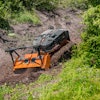



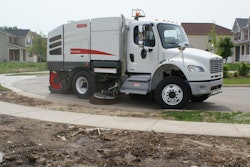



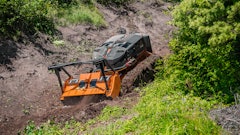


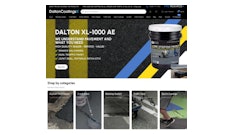
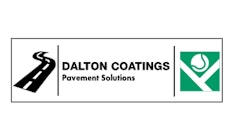
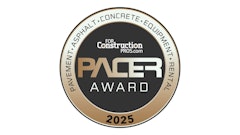




![Pavement Awards 2025[main]](https://img.forconstructionpros.com/files/base/acbm/fcp/image/2024/05/PavementAwards_2025_main_.665883e4276e8.png?ar=16%3A9&auto=format%2Ccompress&bg=fff&fill-color=fff&fit=fill&h=135&pad=5&q=70&w=240)

